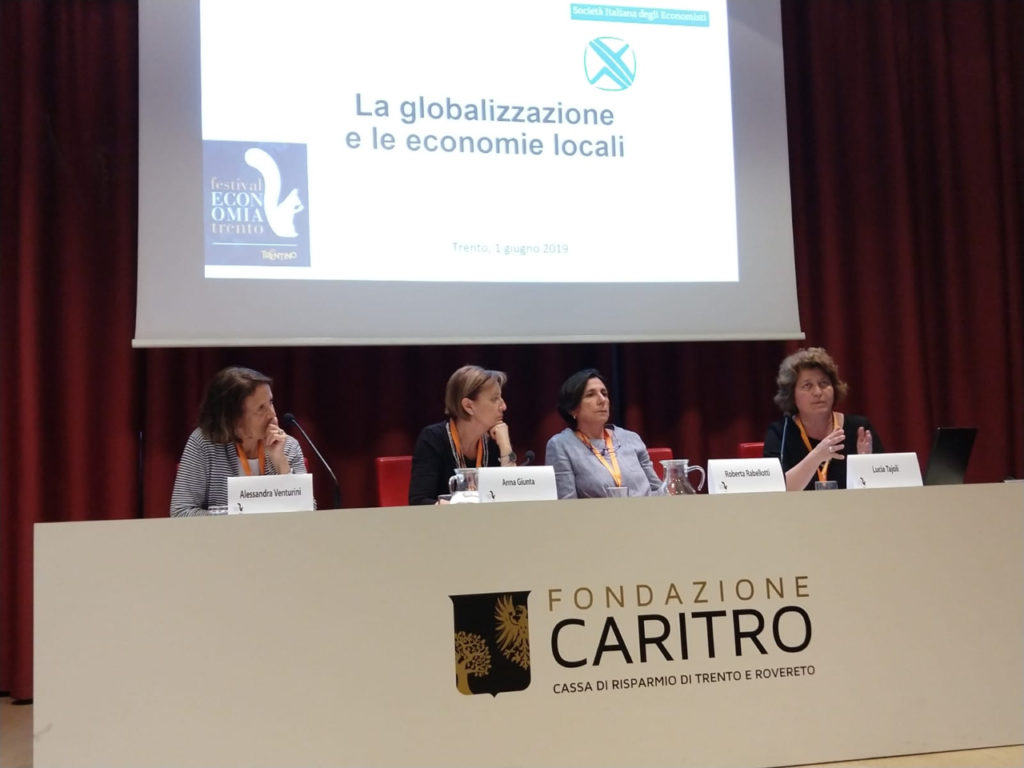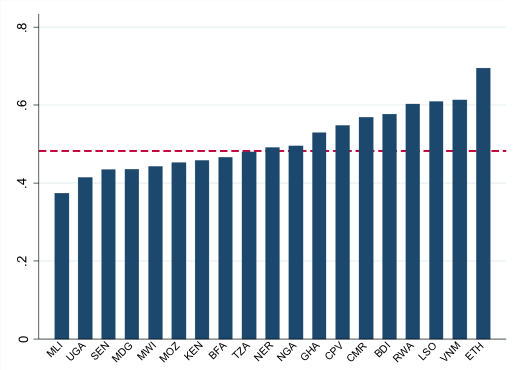Globalization
La globalizzazione e le economie locali
in Media, Presentations Tags: Globalization, Local Development

La globalizzazione e le economie locali
On June 1st on behalf of the Società Italiana degli Economisti I organized a round table on Globalization and local economies at the Festival dell’Economia in Trento with Anna Giunta, Lucia Tajoli e Alessandra Venturini.
Here is the link at the program.
Foreign direct investment, integration in global value chains, and local development
in Articles, Media Tags: Africa, Foreign Direct Investments, Global Value Chain, Globalization, Local Development

Foreign direct investment, integration in global value chains, and local development
New Voxeu.org column with Vito Amendolagine, Andrea Presbitero and Marco Sanfilippo on how the entry and upgrading of low-income countries in Global Value Chains can offer an additional advantage in maximising the potential spillovers from FDI. See also the post on the LSE Blog on Global Investments and Local Development.
The resilience of clusters in the context of globalisation: The basque wind value chain
in Journal Articles, Publications Tags: Clusters, Global Value Chain, Globalization, Local Development, Wind Energy
European Planning Studies, 21(7): 989-1006
The article is co-authored with A. Elola and M.D. Parrilli.
In this paper we study how globalization impacts on the structure and governance patterns of value chains and on the resilience of local clusters. We study the value chains related to two Basque (Spain) companies in the wind energy industry, Iberdrola and Gamesa, and the local cluster to which they belong. We find that firms within the cluster have different types of relationships with lead companies depending on their competences and the complexity of their products. As a consequence, firms also present different potential for growth and/or resilience: some have the capacity to internationalize their operations and/or shift to the offshore wind market, others are vulnerable to competition from providers in the emerging countries. Against this context, we discuss how the cluster responds to these challenges and the role of policy.
The Resilience of Clusters in the Context of Increasing Globalization: Lessons from the Wind Energy Industry
in Presentations Tags: Clusters, Globalization, Wind Energy
MIF, Inter American Development Bank, Washington DC.
In a seminar organized by the Multilateral Investement Fund on Towards a Regional Economic Development (RED) Strategy, Rabellotti presented a paper on the Wind Energy Industry.
Download the pdf, Pres MIF 2013-04
The effects of globalization on Italian industrial districts: Evidence from the footwear sector
in Journal Articles, Publications Tags: Footwear Industry, Globalization, Industrial districts, Italy
European Planning Studies, 14(4): 485-502
This paper is in collaboration with Alessia Amighini.
It examines the impact of globalisation of production on the Italian footwear sector and investigates the structural changes taking place in some shoe districts as they join international production networks.
The following questions are discussed: Are Italian footwear districts specialising in particular phases of the production cycle? Is there a trend towards the reduction of activities carried out within districts? Or are different patterns emerging according to the districts’ main market segment and to the value chains (e.g. luxury fashion market or mass market) they belong to?
The study explores these issues using data on outward processing trade (OPT) collected by Associazione Nazionale Calzaturieri Italiani (ANCI) to analyse the fragmentation of production in the footwear sector at “provincia” level. The available disaggregation of data allows us to investigate the different outsourcing strategies and emerging trends within the district. Two case studies are presented; one on Riviera del Brenta in Veneto and the other on Barletta in Puglia.
In the footwear districts investigated, we find evidence of different international delocalisation strategies. We argue that these different patterns of specialisation are closely related to the clusters’ market position and suggest that these patterns influence the clusters’ potential for future competitiveness.
Distretti industriali e globalizzazione: upgrading e downgrading nella Riviera del Brenta
in Journal Articles, Publications Tags: Footwear Industry, Global Value Chain, Globalization, Industrial districts
Economia e Politica Industriale
This paper is concerned with the impact of globalisation on local competitiveness in Brenta, one of the most important Italian footwear districts. The aim is to integrate the typical industrial district approach with the global value chain approach. To understand the changes confronting Brenta, the paper distinguishes between enterprises operating in a) the top brand chain, dominated by the owners of global brands in the luxury market, and b) the high quality chain in which German buying groups aggregate many independent footwear stores. The questions addressed are: Is globalisation pushing Brenta towards new value chains? What types of governance characterise the relationships between local and outside actors? Do the chains’ leaders come from inside or outside the districts? Does the integration of industrial clusters in global value chains enhance or weaken local upgrading strategies? One of the main findings is the increasing importance of the top brand value chain in the district. To be part of the chain, Brenta’s shoe producers accept a functional downgrading, abandoning design and marketing and focusing on production. Nonetheless, the remarkable recent growth rates in the luxury industry, which is built around global top brands, have allowed local producers in this chain to perform better that those in other chains.